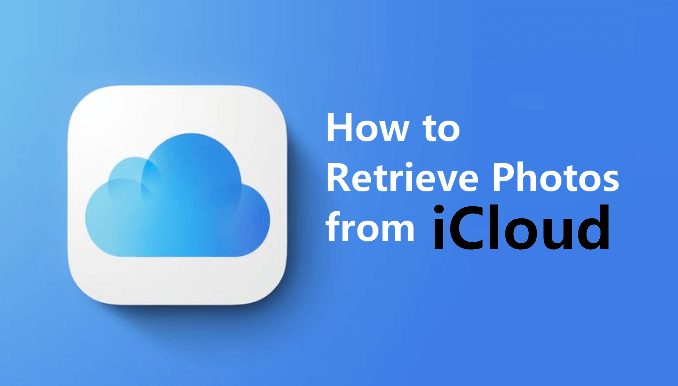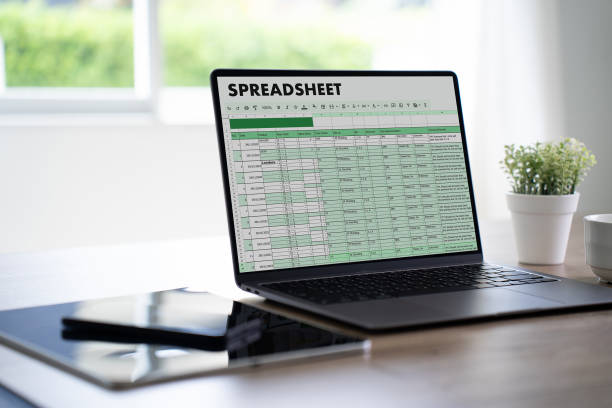Sometimes the reasons why an SD card is not showing up on a Mac can be due to minor factors like dust, moisture, or a substance covering the card’s contact point. Other times, it can be caused by more complicated reasons, such as data corruption, problems with macOS, outdated drivers, etc.
Today, we will provide solutions to SD cards not showing up on Mac. Let’s begin with a discussion of the common causes of Mac not recognizing SD cards.
Causes of Mac Not Reading SD Card
It can be difficult to provide solutions if you don’t know why your SD card suddenly stops working on a Mac. Several common causes of SD cards not showing up on Mac will be analyzed in this part to help you figure out the problem you are facing.
⭕ The Card is Locked
Some SD cards come with a small physical switch on the side that is used to lock and unlock the card. If the switch is locked, the SD card won’t show up on your Mac.
⭕ Physical Damage
A standard SD card size is 32x24x2.1mm and the dimension of the memory chip where data is stored is even smaller. Thus, it is easy to have physical damage to the SD card or card reader without knowing, and this could impact Mac not reading the SD card.
⭕ Not Supported File System
The newest macOS versions are compatible with different file systems, such as APFS, FAT32, HFS+, and exFAT. But, there are many other file systems out there that are not compatible with macOS. If you use one of them, you will struggle with how to open SD cards on a Mac.
⭕ Data Corruption on SD Card
Data on SD cards can become corrupted and this can cause Mac not to recognize the SD card. You will most likely experience this if you share your memory card with several people, particularly Windows users without antivirus.
⭕ Outdated Drivers
Over time, macOS receives updates like new drivers for SD card readers and other hardware components. If the drivers are outdated, it could cause the Mac not reading SD card.
How to Fix the Error of SD Card Not Showing Up on Mac
Considering the causes discussed above about Mac not recognizing SD cards, there are a couple of solutions you can try out. Let’s discuss them one by one.
Check the Physical Lock Switch and Protection Status
When your SD card is locked, the Write Protection Status is ON. This means that you won’t be able to operate on it, which causes Mac not to read the SD card.
Full-sized SD cards have a lock switch on the left side. Check to see if it’s locked or unlocked. If it is locked, make sure to unlock it for it to show on your Mac.
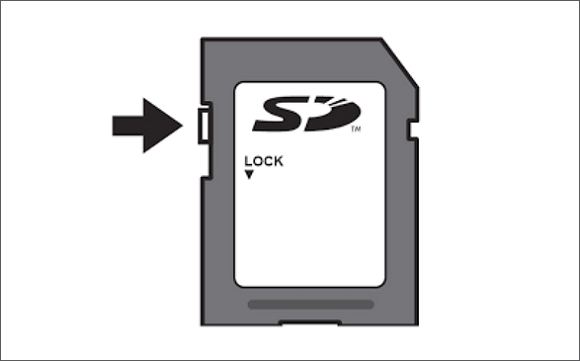
Check the Physical Condition of the SD Card
As mentioned in the early part of this post, substances on the contact point of the SD card can prevent it from opening on Mac. Therefore, check the health condition of the SD card.
Make sure there is no scratch, dirt, or moisture on the shiny contact points of the SD card. Clean it with a clean and soft dry cloth. Be more intentional on the corners of the contact points.
Verify Finder Desktop and Sidebar Preferences
When your SD card is connected to a Mac, it should display in the Finder’s sidebar and on your desktop. If it doesn’t it means your Finder Desktop and Sidebar Preferences have been changed.
Do this for your SD card to show in the Finder’s sidebar:
Step 1. Open Finder.
Step 2. Select Finder on the top bar and click on Preferences.
Step 3. Go to the Sidebar tab.
Step 4. Ensure all items under Locations are ticked.
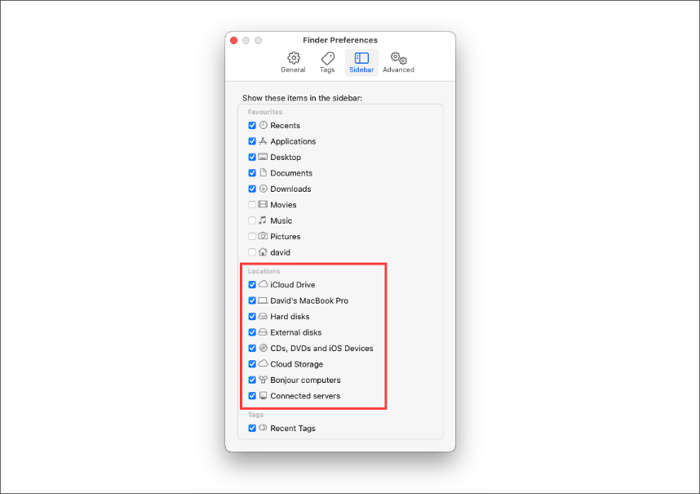
Do this for your SD card to show on your desktop:
Step 1. Open Finder.
Step 2. Select Finder on the top bar and click on Preferences.
Step 3. Go to the General tab.
Step 4. Ensure all items under Show these items on the desktop are ticked.
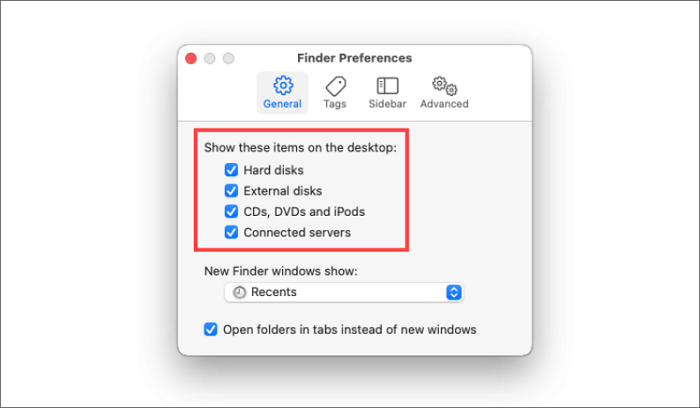
Update macOS to the Latest Version
Not having the latest macOS version installed can cause your SD card not to show up. Updated macOS versions ensure your system has the latest features for improved performance and compatibility fixes to SD card issues. Hence, ensure your Mac’s operating system is up-to-date.
Do the following to install the latest macOS version:
Step 1. Go to System Preferences.
Step 2. Choose Software Update.
Step 3. Install the available updates.
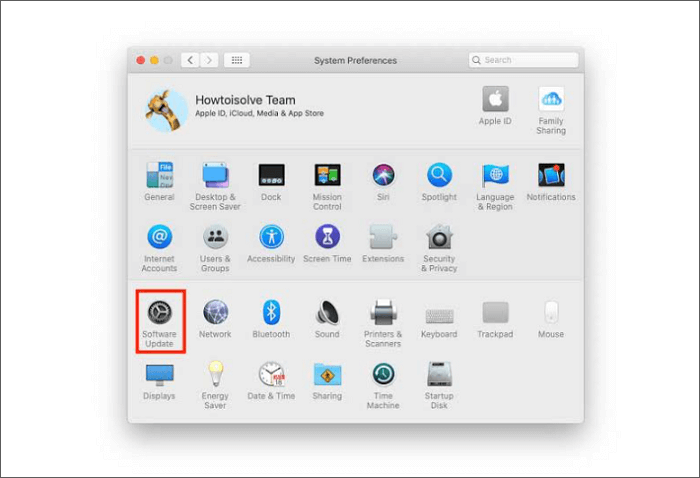
Format SD Card
If none of these solutions work, you might have to format the SD card. Formatting the SD card enables you to convert the original file system of your SD card into another file system that is supported by macOS.
This approach sounds helpful but risky, and you may worry about whether this method will lead to data loss. But do not fear, we’ve got you covered. You can easily recover your Mac data on the SD card afterward.
Follow these steps to format your SD card:
Step 1. Go to Disk Utility. Choose your SD card and click on Erase.
Step 2. Give the SD card a name that you will remember easily.
Step 3. In the Format section, select exFAT if the SD card is larger than 64GB, and if it is not, select FAT32.
Step 4. Tap Erase on the bottom right corner.
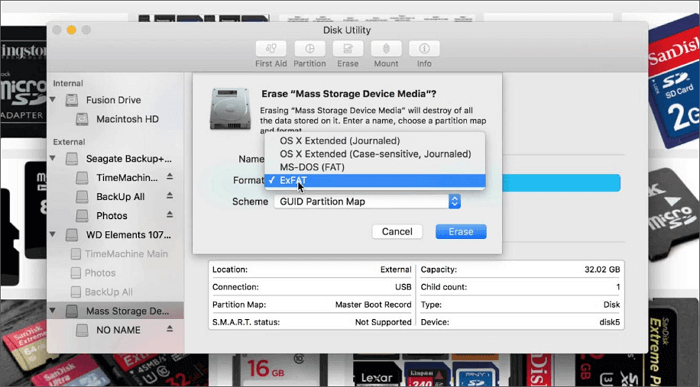
Update the SD Card Driver
Mac might fail to recognize the SD card if the driver is outdated. To fix this, visit the official website of the SD card manufacturer. Check for the newest driver that’s compatible with your macOS. Download and install it to resolve any compatibility issues experienced.
Bonus Tip: How to Recover Data from the Formatted SD Card on Mac
Formatting your SD card isn’t the end of the road. You can retrieve your lost data by using professional recovery software like ONERECOVERY. This software is tested and trusted by experts across the world for its high success rate, ease of use, and capability to fix SD cards not showing up on Mac.
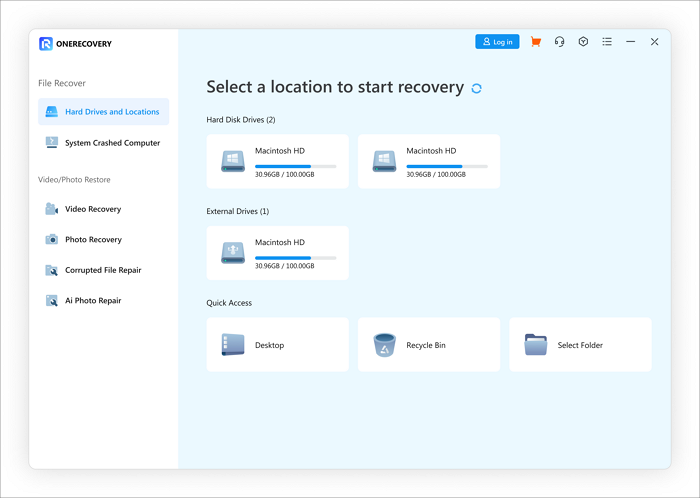
Other features include:
✅ ONERECOVERY is a premier choice for PC data recovery.
✅ Data loss caused by 500+ scenarios, including software crashes and malware attacks can be successfully fixed.
✅ This software can retrieve deleted files from the recycle bin and 2000+ storage devices, including SD cards, HDD, SDD, USB flash drives, etc.
✅ ONERECOVERY supports more than 1000 file formats, including HFS+, APFS, or NTFS.

To recover data from the formatted SD cards, follow these steps:
Step 1. Select the target folder on your SD card.
Step 2. Initiate the scanning process. The software will conduct a deep scan of the SD card, going through all deleted files.
Step 3. Go through the files on the scan result and select the files you need.
Step 4. Press the Recover button to get the necessary data back to your SD card.
Click here if you need a more detailed tutorial: >> How to Recover Deleted Files from SD Card on Mac
Conclusion
SD cards not showing on Mac can be attributed to many causes. In this post, we’ve explained several solutions you can try to fix this issue. We’ve also provided a step-by-step process to guide you when recovering data from formatted SD cards on Mac.
Related Posts:
● How to Fix Unreadable SD Card and Recover Data
● How to Format an SD Card Without Losing Data on Windows
Vanessa is a professional editor with a strong foundation in computer information technology. Since graduating, she has dedicated her career to create content in IT fields. In the past three year, she has accumulated sufficient knowledge in data recovery, computer problems troubleshooting and application of multimedia software.
She has been trying her best to bridge the gap between complex technical concepts and accessible, reader-friendly content.





